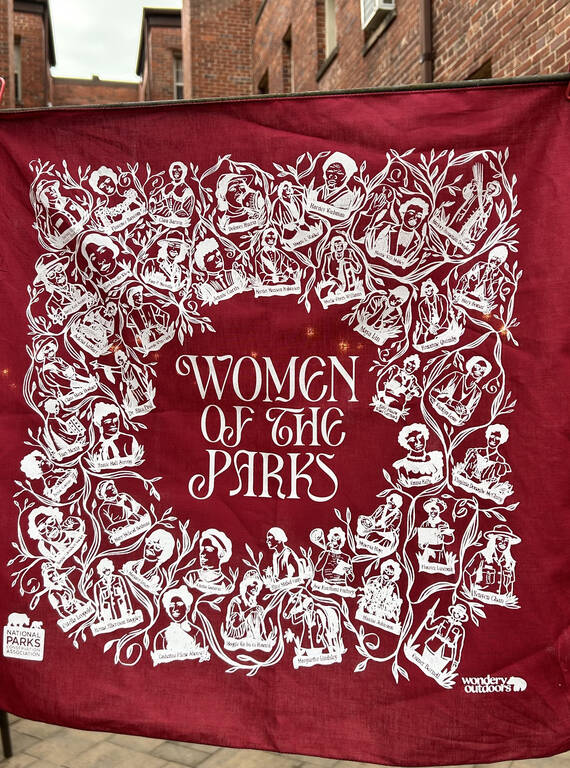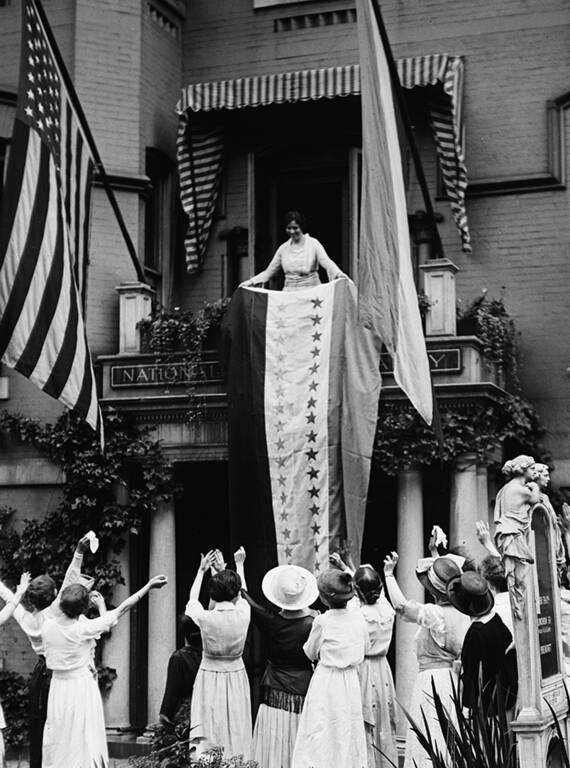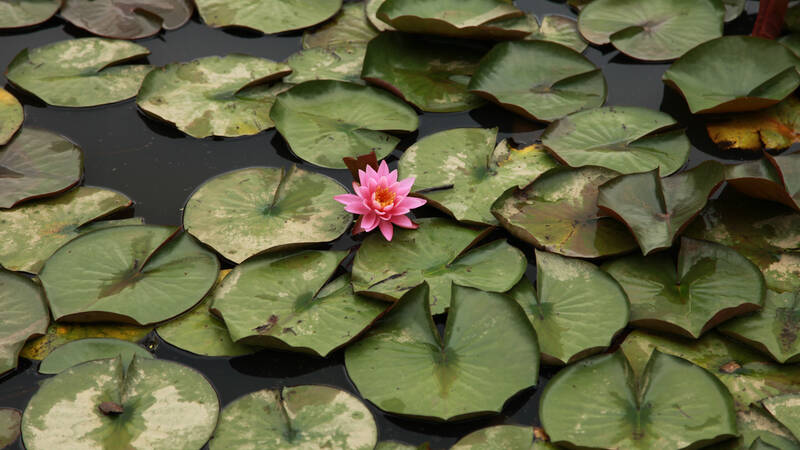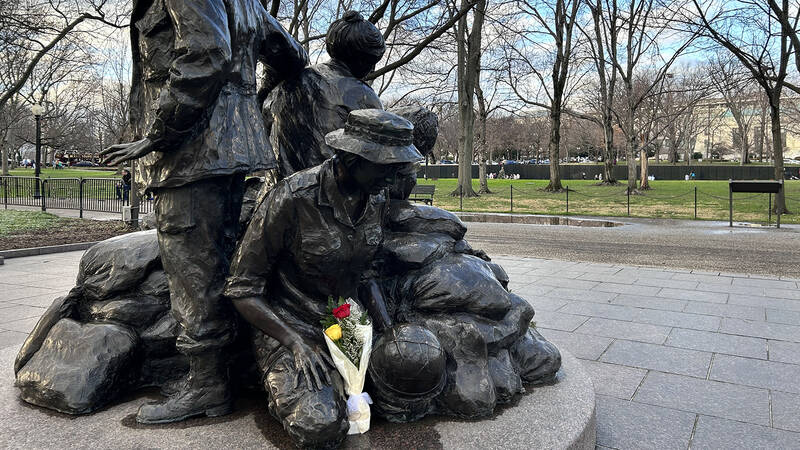Check out three national park sites that represent significant stories in women’s history — and in the story of our nation.
Our nation’s capital is packed with national park sites telling the American story, from the iconic landmarks you recognize on the opening credits of your favorite TV political dramas to the lesser-known places where history unfolded and rippled across the country. In all, Washington, D.C., is home to 25 national parks and over 100 national monuments and memorials, yet only a handful tell the stories of women.

The Outdoors and National Parks Are for 𝘼𝙡𝙡 Women
A Q&A with Wondery Outdoors’ co-owner and community director, Lydia Mok, who organizes events to get more women of color to enjoy outdoor activities.
See more ›Although women make up 50% of the population, their stories are largely obscured here in D.C. and across the National Park System. I’ve written about women of the parks before, and during the course of my research I was stunned how few names were familiar to me, even as a recovering undergraduate gender studies major. It felt unfair that, while growing up, I learned about the same handful of women over and over, as if there were only a few who had ever done something worth talking about — but there are so many if you just look a little harder.
I have made it my personal mission to learn women’s names and support their work. In every national park gift shop, I seek out women authors and bring their work home with me, hoping to learn their stories of strength and perseverance and inspire others who peruse my bookshelves to see that the quantity of women’s contributions is as great as the quality.

NPCA’s Women in the Parks bandana.
© Vanessa Pius/NPCAChampioning their stories is part of what inspired NPCA’s “Women of the Parks” bandana, which we are handing out at this year’s in-person Women’s History Month event. The artwork features more than 40 women who left their mark on our national parks. Some names might be familiar, others might not. I hope this wearable art spurs people to look deeper and see how women shaped our world — and our parks.
This month’s free, family friendly event to celebrate Women’s History Month will be the first of its kind. We’re visiting three D.C. sites that tell the stories of women trailblazers, joined by our partner Wondery Outdoors, a gear and apparel company committed to empowering women in the outdoors. Participants will get behind-the-scenes tours of Belmont-Paul Women’s Equality National Monument, Kenilworth Park & Aquatic Gardens and the Vietnam Veterans Memorial with the nearby Vietnam Women’s Memorial from rangers and experts as we foster community and explore the importance of representation.
Here’s what makes each of these sites significant, not only for women’s history but for the story of our nation.
1. Belmont-Paul Women’s Equality National Monument
Belmont-Paul Women’s Equality National Monument is named for Alice Paul, founder of the National Woman’s Party, and Alva Belmont, who served as the party’s president from 1920-1933. The monument sits on Capitol Hill, next door to the Hart Senate Office Building.
The 200-year-old brick structure is one of the oldest in D.C. and contains history critical to women all over the nation. Descendants of the original owners sold the house to the National Woman’s Party in 1929, and it functioned as headquarters, hotel and second home for some members until the 1990s.
While many people associate the National Woman’s Party with the 19th Amendment, which was ratified in 1920 to give women the legal right to vote, the group’s headquarters on Constitution Avenue became synonymous throughout the 20th century with the women leaders who lobbied from here for the Equal Rights Amendment (ERA) and led international work for women’s equality.
The building’s location is significant: from the second floor, suffragists — and later second-wave feminists fighting for the ERA — could keep a watchful eye on the U.S. Supreme Court, located just across the street. The monument now contains the most complete collection of women’s suffrage and equal rights movement documents and artifacts in the United States.

Alice Paul, chair of the National Woman’s Party, unfurls a banner in Washington, D.C., Aug. 18, 1920, to celebrate ratification of the 19th Amendment, which gave women the right to vote.
Library of Congress, photograph by Harris & EwingThe monument was closed for Great American Outdoors Act-funded renovations for a few years, but it reopened in 2023 with improvements that greatly enhance the visitor experience. New UV window coatings protect the artifacts inside, meaning heavy drapery is no longer needed and visitors can look outside and better understand the site’s location. There’s also a library where visitors can brush up on women’s history or create their own protest banners and sashes.
I found visiting Belmont-Paul to be especially powerful because it is one of the few museum experiences in the country where visitors almost exclusively see women’s faces and names.
2. Kenilworth Park and Aquatic Gardens
Tucked in a residential neighborhood in northeast Washington, Kenilworth Park and Aquatic Gardens is the only national park site devoted to cultivated, water-loving plants. Kenilworth might not exist in its current form today without its steward, Helen Fowler Shaw. In 1889, Shaw’s family started a commercial aquatic garden, which grew from a hobby (today we might call it a side hustle) into a booming business, shipping flowers to as far away as New York and Chicago.
Shaw took over the management of the gardens from her father in 1911. Under her leadership, the business became the country’s largest exporter of cut water flowers, utilizing the area’s ecology to market 63 varieties of plants. Besides having sharp business acumen and horticultural skills, Shaw was the first woman in Washington licensed to drive a truck.
Internationally known as “The Water Lily Lady,” Shaw traveled around the world to bring back new water lilies and lotuses to cultivate.
Shaw opened the property to the public seasonally on Sunday mornings in the 1920s and 1930s, drawing up to 6,000 visitors per day. Shaw and her family resisted the U.S. government’s expansion of Anacostia Park but agreed to sell in 1938 following congressional pressure. Shaw rented her house on the property from the government and lived there until her death in 1957.

A pink opal lily blooms at Kenilworth Aquatic Gardens.
NPSThe National Park Service agreed to maintain the ponds, and she remained highly involved by training park personnel and giving occasional tours of the grounds.
Today, visitors can wander the ponds, make their way out to a boardwalk overlooking the tidal marshes, and view Shaw’s illustrations, many of which were featured in Shaw Gardens brochures.
3. Vietnam Veterans Memorial and the Vietnam Women’s Memorial
The National Mall, known as “America’s Front Yard,” includes over 100 monuments and memorials spread across 1,000 acres of national parkland. But only a handful of these impressive structures honor the lives and contributions of women. This dominance of men even extends to the architects and artists who brought so many nationally recognized monuments to life. Two newer additions are — so far — the exception.
Maya Lin, then 21, won the largest design competition in American history with her submission for the Vietnam Veterans Memorial in 1981. Originally a class project, her unconventional design featuring the names of 58,000 slain soldiers on 144 panels of polished black granite received criticism and accusations that it was unpatriotic.
The design is markedly different from other memorials on the National Mall — black when others are white, sunk into the ground instead of towering above, no American flags or iconography — yet today it’s the most-visited memorial on the National Mall, with over 5 million annual visitors. There was so much backlash that Lin’s name was not spoken during the unveiling. Fortunately, visitors soon saw how powerful the design was — and remains.
The Vietnam Veterans Memorial includes eight women’s names, all nurses who were killed during the war. A nearby bronze sculpture by Glenna Goodacre honors all 11,500 women who served in Vietnam as physicians, nurses, intelligence analysts, air traffic controllers and communication specialists. The Vietnam Women’s Memorial, dedicated on Veterans Day in 1993, depicts three women caring for a fallen soldier.
Both sites are places of pilgrimage for veterans and their families — and even for women without personal connections to the war.

Flowers left at the Vietnam Women’s Memorial. The Vietnam Veterans Memorial can be seen in the background.
© Vanessa Pius/NPCAA ranger I spoke with described how the Vietnam Women’s Memorial has become a hub for small protests against patriarchy or current events that negatively affect women, as well as for gratitude, often in the form of hair elastics and scrunchies left at the foot of the statue.
The ranger said women feel called to this place, especially for its significance as one of the only sites dedicated to women within D.C.
More to explore
If you find yourself in the area, there are three additional women’s history sites worth exploring. The Mary McLeod Bethune Council House National Historic Site tells the story of a woman born into poverty who grew up to start a school for African American girls, serve as advisor to four U.S. presidents and establish the National Council of Negro Women. The Clara Barton National Historic Site reveals the life and legacy of the founder of the American Red Cross and is the first national park site dedicated to a woman. The Chesapeake and Ohio Canal National Historical Park also sheds light on women’s history through the stories of women captains and lock tenders on the Potomac River.
Wondery Outdoors partners with NPCA as an extension of its mission to be a sustainable outdoor lifestyle brand dedicated to liberating women in the outdoors through awareness, resources and the creation of an inclusive outdoors community for women. To support this shared mission, Wondery will donate 3% of the purchase price of each of its Parks of the USA Bucket List Bottles to NPCA.
About the author
-
 Vanessa Pius Former Senior Manager, Social Media and Engagement
Vanessa Pius Former Senior Manager, Social Media and EngagementAs Senior Manager, Social Media and Engagement, Vanessa advanced NPCA’s mission through creative storytelling and engaging the organization’s online community until 2025.
-
General
-
- NPCA Region:
- Mid-Atlantic
-